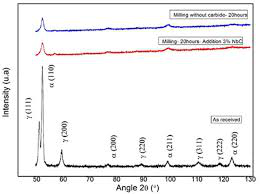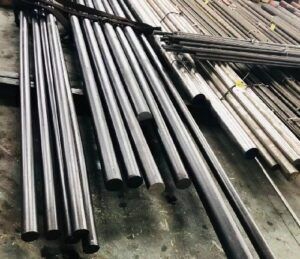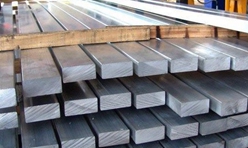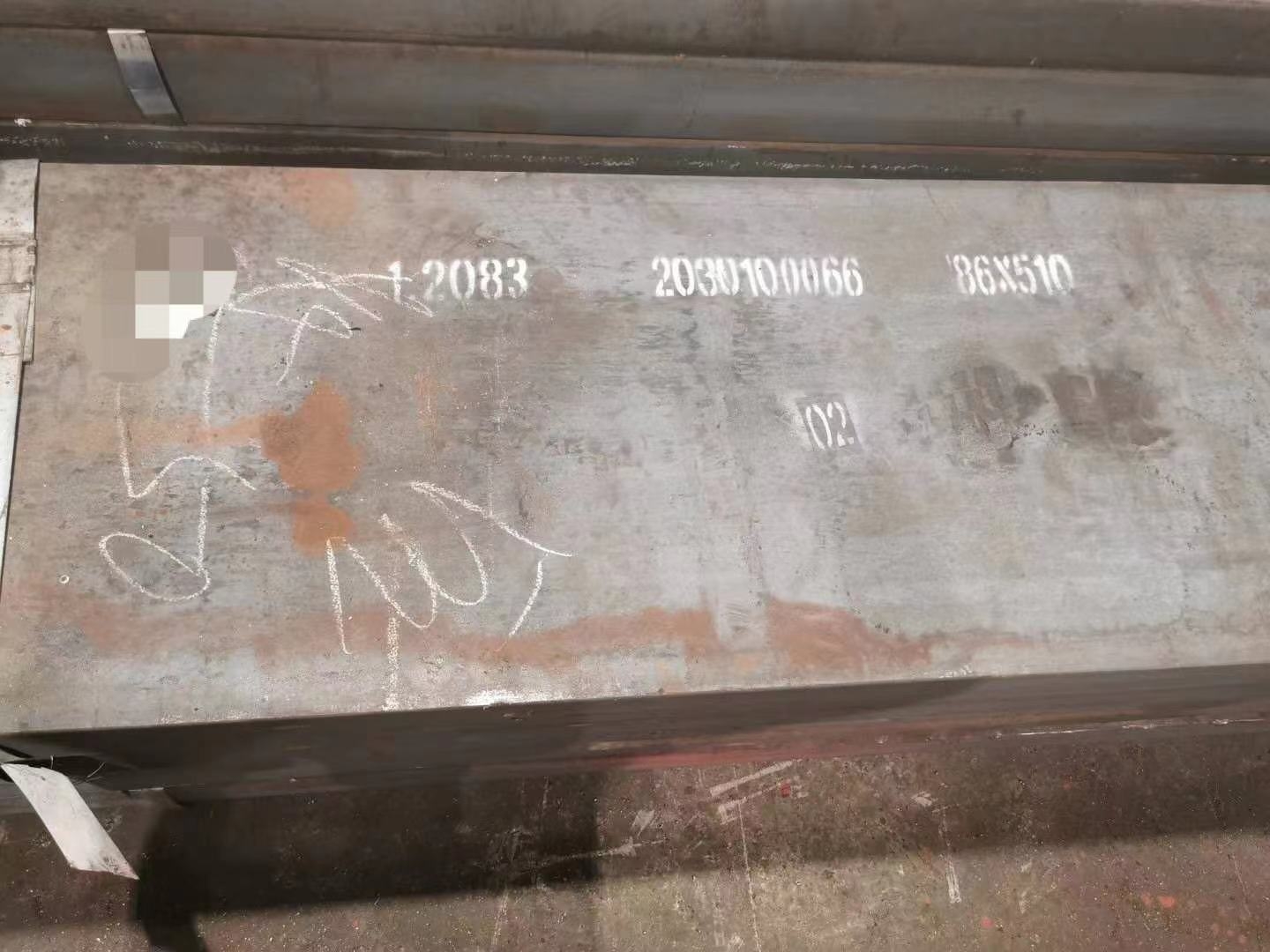UNS S31803 Duplex Stainless Steel

UNS S31803 Duplex Stainless Steel
Duplex UNS S31803 is the most common duplex grade in the market with high mechanical strength. It is widely used in Oil & Gas Industry, hydro power, pressure vessels, pulp & Equipment for the Paper Industry, Paper Industry, structural components and chemical tankers. The alloy is not intended to be used at temperatures above 300°C due to embrittlement.
ABOUT UNS S31803
UNS S31803/2205 is a duplex grade with a ferritic-austenitic microstructure. The alloy consists of around 40-50% ferrite in the annealed condition. The duplex microstructure has the high strength of the ferritic grades whilst retaining the corrosion resistance of the austenitic grades. It is not uncommon to see the metal used as a practical solution to chloride-induced stress cracking, which is the achilles’ heel of stainless steel.
It has superior resistance to chloride pitting and crevice corrosion as compared to 317L stainless steel. The alloy has outstanding corrosion resistance to seawater and most concentrations of sulphuric acid. In addition, it is also resistant to sulphide stress corrosion cracking (sour-gas environments).
The high quality and therefore performance of UNS S32205 is widely attributed to the high levels of chromium present as well as nitrogen and molybdenum.
Smelting Option
1 EAF: Electric Arc Furnace
2 EAF+LF+VD: Refined-smelting and vacuum degassing
3 EAF+ESR: Electro Slag Remelting
4 EAF+PESR: protective atmosphere Electro Slag Remelting
5 VIM+PESR: Vacuum induction melting
Forming Option
1 Hot rolling process
2 Hot Forging: Electro-hydraulic; High-speed-hydraulic; Oil-hydraulic; Precision-forging
Heat-treatment Option
1 +A: Annealed (full/soft/spheroidizing)
2 +N: Normalized
3 +NT: Normalized and tempered
4 +QT: Quenched and tempered (water/oil)
5 +AT: Solution annealed
6 +P: Precipitation hardened
Suface Option
1 Black Surface
2 Grounded: Bright but rough ; Not precision
3 Machining for plate: Bright and precision; Little turning scar
4 Peeled/Turned: Bright and precision; Little turning scar
5 Polished: Very Bright and precision size; Not turning scar
Other Services
1 Cutting: Small pieces
2 CNC Machine: Produce as your drawing
3 Package: Bare/Nylon/Canvas/Wooden
4 Payment:T/T, L/C, O/A(request credit)
5 Transport:FOB/CFR/CIF/DDU/DDP (train/ship/Air)
THE DIFFERENCE BETWEEN S31803 AND S32205
Duplex stainless steels account for >80% of the consumption of duplex, super duplex and hyper duplex grades. Developed in the 1930’s for application in paper and pulp manufacture, duplex alloys are based around a 22% Cr composition and the mixed austenitic:ferritic microstructure that delivers desirable mechanical properties.
Compared with the generic 304/316 austenitic stainless steels, the family of duplex grades will typically have twice the strength and provide a significant uplift in corrosion resistance. Increasing the chromium content of stainless steels will increase their pitting corrosion resistance. However, the Pitting Resistance Equivalent Number (PREN) that infers an alloys resistance to pitting corrosion also includes a number of other elements in its formula. This subtlety can be used to explain how the difference between UNS S31803 and UNS S32205 developed and whether it matters.
Following the development of duplex stainless steels, their initial specification was captured as UNS S31803. However, a number of the leading manufacturers were consistently producing this grade to the upper end of the allowable specification. This reflected their desire to maximise the corrosion performance of the alloy, aided by the development of the AOD steelmaking process that allowed tighter control of composition. In addition, it also allowed the level of nitrogen additions to be influenced, rather than just present as a background element. Therefore, the highest performing duplex grade sought to maximise the levels of chromium (Cr), molybdenum (Mo) and nitrogen (N). The difference between a duplex alloy whose composition meets the bottom of the specification, versus one that hits the top of the specification can be several points based upon the formula PREN = %Cr + 3.3 %Mo + 16 % N.
In order to differentiate the duplex stainless steel produced at the top end of the composition range, a further specification was introduced, namely UNS S32205. Duplex stainless steel made to the S32205 (F60) caption will fully meet the S31803 (F51) caption, whereas the reverse is not true. Therefore S32205 can be dual-certified as S31803.
Mechanical Properties of UNS S31803
| Tensile Strength,min. | Yield Strength,min. | Elongation,min. | Hardness Brinell, max |
| Mpa | Mpa | % | HB |
| 620 | 450 | 25 | 290 |
Physical Properties of UNS S31803
| Density | Thermal Expansion | Modulus of Elasticity | Thermal Conductivity | Electrical Resistivity |
| g/cm3 | K | Gpa | W/m.k | Ω.m |
| 7.805 | 13.7*10-6 | 200 | 19.0 | 0.085*10-6 |
Stainless Duplex UNS S31803 piping Products are less costly compared to other types of duplex steel material. One of the reasons is the composition does not have much molybdenum as opposed to other grades of duplex steel. 22 Cr Duplex UNS S31803 F51 raw material includes chromium and nickel in mid ranges. This makes the Duplex UNS S31803 material to perform midway between austenitic steel types and the super duplex steel types. Duplex SS UNS S31803 material is called the standard duplex steel. This is also the most commonly used type of duplex due to the low cost and interchangeability between austenitic steel needs and duplex steel needs.
What is UNS S31803?
Stainless Duplex S31803 material is widely used in chemical industries, marine tools and equipment, water desalination plants, food sector, paper and pulp industry and much more applications.
Temperature Range Of UNS S31803
| Grade | Temperature |
| UNS S31803 | 1020-1100°C/ 1868-2012°F |
Astm A790 UNS S31803 Specification
| Grade | UNS | Duplex Industry Specifications |
| SAF 2205® 22Cr | UNS S31803 | ASME SA-182 (F51), SA-240, SA-798, SA-790, SA-815 ASTM A182 (F51),A240, A276, A479, A789, A790, A815, A928, A988 SAE J405 |
Duplex Stainless Steel UNS S31803 Equivalent
| Duplex 2205 | UNS S31803 | 1.4462 | F51 |
UNS S31803 Thermal Conductivity
| Properties | Metric | Imperial |
| Thermal expansion co-efficient (@20-100°C/68-212°F) | 13.7 µm/m°C | 7.60 µin/in°F |
Duplex UNS S31803 Properties
| Properties | Imperial | Metric |
| Duplex Steel S31803 Material Density | 0.283 lb/in³ | 7.82 g/cm³ |
Duplex Steel UNS S31803 Allowable Stress
Design Stress of SA-240 Duplex Steel S31803 :
| 200F – 25.7 ksi | 300F – 24.8 ksi | 400F – 23.9 ksi |
| 500F – 23.3 ksi | 600F – 23.1 ksi |
Duplex UNS S31803
Good weldability in thick plates.
Good low temperature toughness.
Resistance to stress corrosion cracking of importance in many applications including hot water tanks, process plant, brewing tanks, and desalination plant.
Higher strength which is around twice that of Type 304 austenitic stainless steel. This leads to reduced plate thicknesses being used in fabrications reducing the weight which is of particular significance in items such as pressure vessels, storage tanks, and structural applications such as bridges.
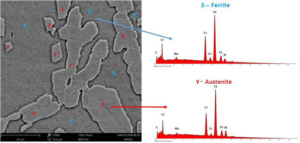

Hydrogen content for 2205 duplex stainless steel (UNS S31803) tested in different media in autoclave wheel tests for 30 days at 80 °C and 1 RPM. The chloride concentration of the brine was 15,000 mg/l
